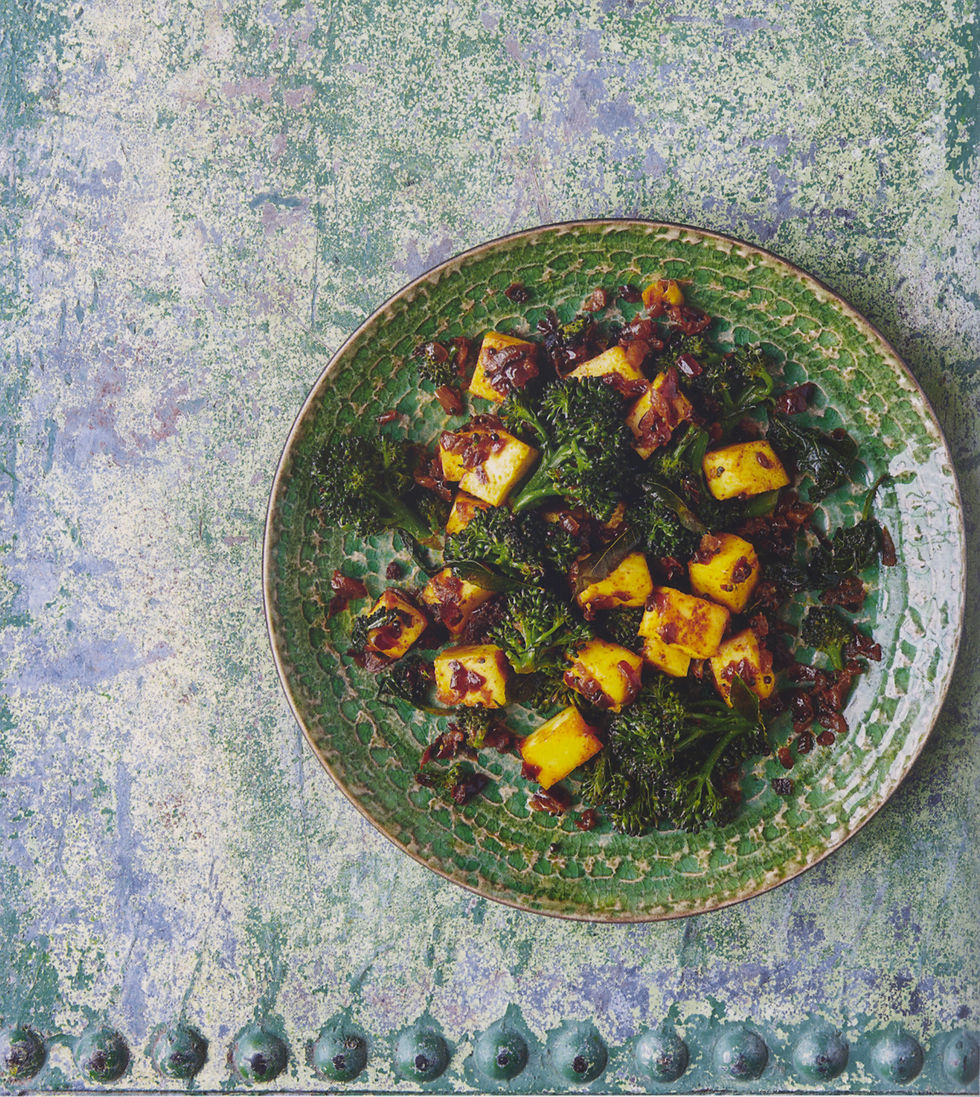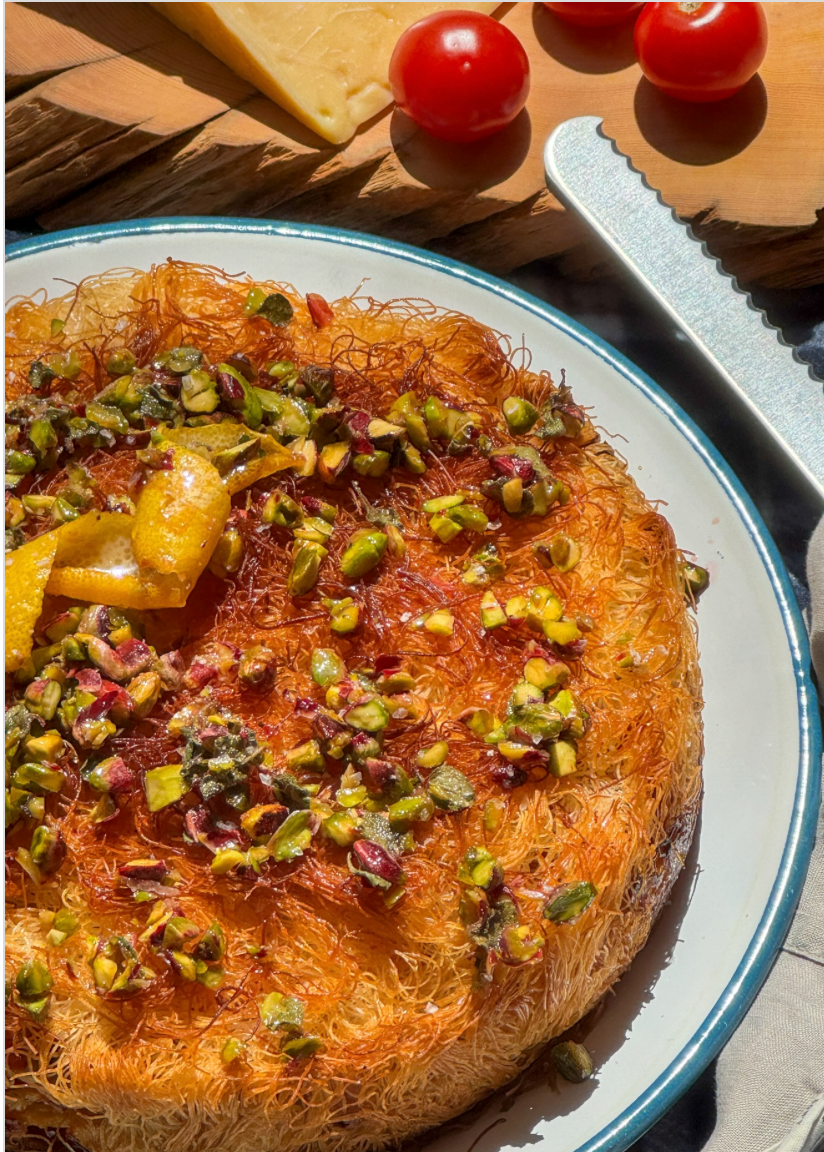Questions arising - a cookbook present
- rosemary
- Jan 10, 2024
- 6 min read
"Emma Freud: Because you aren’t surrounded by an Indian community in the UK, has your cooking become more anglicised?
Chetna Makan: Actually, no. This is exactly how my mum cooks, I haven’t done anything different." Interview from BBC Good Food

The lovely mother of my two oldest grandsons, gave me this book for Christmas. We all love Indian food and she knows that I cook it from time to time, and so one of the two she bought me was this - Chetna's Healthy Indian.
I confess I was not initially that excited, The cover did not appeal and I had no idea who this lady was. However when I opened it up I could see interesting recipes and stunning photographs, and so I persevered. I have now read - well skimmed I suppose - the book and although I will not say that it's the greatest cookbook I have ever seen, there are certainly a few recipes to try.
It also raised a few questions for me, so I'll start with them.

The first, and most obvious is who is she and have I missed out on a new cooking sensation? Cooking sensation? I don't really know. She came to fame initially through competing in The Great British Bake-off - even though she didn't get to the final. Hang on, thought I, isn't that all about cakes? Well yes it is, and even more weirdly, before that she wasn't even that much into cooking - well anymore than being a good home cook who learnt to cook from her mum.

In fact her mum is mentioned often throughout the book and in the couple of interviews that I found as well, to the point where one wonders whether the recipes are hers or her mother's. When asked by Maria Bell on the website Khoollect who was her greatest influence she answered:
"My mum. She’s the kind of person who knows Indian food inside and out but she’s not just happy with that, she so loves to learn. Even now when she comes to visit me, she always walks around with a little note pad. She’ll watch cooking programmes here and she’ll be making notes. She’s such a keen cook and learner and I’ve always seen that with her so I’ve always loved cooking.”
And in another interview:
"She learned through her newspaper, they used to print a recipe once a week.Every week she would cut it out and stick it in a scrapbook – that’s how she taught herself."
So a self-taught mother leads to a partly self-taught daughter - or at least a can-do attitude - or as she puts it:
"I don’t believe opportunities land in your lap. You have to go out and get them, and this what I’ve done all my life."
She was born and spent her youth in Central India where she trained in fashion and actually became a fashion designer. However when she came to England after marriage to her doctor husband, it was too difficult to pursue a career in fashion. With children, she began to bake at home - hence the application to and partial success in The Great British Bake-off for which she had to teach herself various baking techniques such as how to make choux pastry. Who knows why she thought she would apply. After that she wrote a book about baking The Cardamom Trail, then another about Indian street food - Chai, Chaat and Chutney, launched a YouTube channel, a website, Instagram, Facebook, Twitter/X and voilà - fame. In the Uk anyway. The US too I'm guessing from the UK/US Glossary at the back of the book and a few mentions on US websites. I think this is her fourth book, and there is another one at least after this. It just shows what you can achieve if you work hard and put your mind to it.
Next question(s) about some specifically Indian food matters, which mostly derive from a lack of information. Let me explain.
For we English speaking cooks of the world, I think we have come to expect, glossaries, and words of explanation about ingredients, techniques, equipment, genres of food - sometimes, even substitutions, when we are confronted with a book about food from a country who's cuisine is unfamiliar to us. Even if we are relatively familiar, there always seems to be some new ingredient or word. And most authors oblige. Sometimes too much. There is none of that in this book in spite of her assurance that:
"No-one wants to spend ages trying to order things online or looking for speciality ingredients. The spices I use are the basic ones you can get hold of. ... the spice box has got the basic spices which I need to cook absolutely any kind of meal. These are salt, chilli, turmeric, ground coriander, cumin seeds & mustard seeds." Chetna Makan
And there are definitely things, that I felt could have a bit more explanation - even a suggested substitute here and there. Now I know that Britain has a large Indian diaspora - although it tends to be concentrated in particular areas I think. Chetna lives in Kent and says there are none in the area in which she lives. Anyway here are three unknowns, or little known that I looked up:

Asafoetida I actually do know of this but it didn't mean much more to me than that it was ubiquitous in Indian cuisine, hard to find in mainstream supermarkets, and that it stank to high heaven. I vaguely remember using it once, and couldn't get past the smell - in some places it is known as devil's dung. Or maybe Charmaine Solomon warned me of that and said it didn't matter, so I never have used it. However I am now wondering whether I should after reading an article in Bon Appétit by Priya Krishna
"Asafoetida is the most simultaneously misunderstood and sublime ingredient in Indian cuisine. ... To bring out its ideal level of funk and temper its bitterness, it must be cooked directly with fat. Seek out asafoetida, buy it, and cook with it. It’s the ringer that makes so many Indian dishes exceptional. It’s a flavor that you can’t pinpoint in a dish or even fully explain but that lingers on your taste buds long after all the other spices. Once you start cooking with asafoetida, every Indian dish you eat without it will taste like it’s missing something. And you’ll know why."
However if you do, use it very sparingly, and keep it in a screw top jar - maybe put that inside another container too.

Chaat and Chaat masala
Chaat - not mentioned quite as often as the masala which often pops up in a list of ingredients - seems to be a term that encompasses all street food. As you can see from this photograph of various forms of chaat - the variety is enormous.
"They manage to mesh together salty, sweet, spicy, tart, and more without skipping a beat. ... The foundation is usually a starchy component, such as crisp puffed rice or fluffy lentil-and-rice dumplings. That base is then topped with anything from hard-boiled eggs to fried lentils to radiant, ruby-colored pomegranate seeds. The only requirement for an ingredient to make its way into a chaat is that it has to bring some serious punch to the party." Solah El-Waylly/Serious Eats
And I'm guessing that the 'serious punch' is brought about with the chaat masala and Serious Eats gives you a recipe - but look - what is Kala namak? Or Ajwain and where can you find green mango powder?

Sabzi or Sabji Sabzi is an urdu word that just means vegetables so we're talking Northern India and Pakistan here. It's a bit more complicated than just vegetables though - it generally refers to a mix of vegetables - fried and simply spiced. This one is Paneer and purple sprouting broccoli sabji. Alas the recipe is not online. Beautiful photograph however as most of them are.
I did note a few recipes to try - more than the two a publisher reckons is a hit rate for a cookbook, so maybe it's a success. And there were more too, but I have ignored them here because the recipes are not online. Not even on her own website. Maybe you have to be really, really famous before you can afford to publish all your recipes online.
So here are the top three recipes for me that you can access online, and which I see show my non-vegetarian bent: Masala cauliflower and potatoes; Chicken and potato in pickling spices; Chicken with kale and yoghurt
An interesting book for different kinds of reasons. The writing isn't that great, and neither are the explanations - well explanations are few and far between. And completely Indian. It is indeed interesting, that she has not absorbed British influences into her dishes. No fusion food here. Which is not a criticism, just a comment and question in itself really. A question as to how much she misses India.
Considering the dull cover it is amazing that the photographs within are so beautiful. They are the work of Nassima Rothacker (what a name !), the photographer and Emily Kydd, the food stylist. They deserve a mention.













Comments